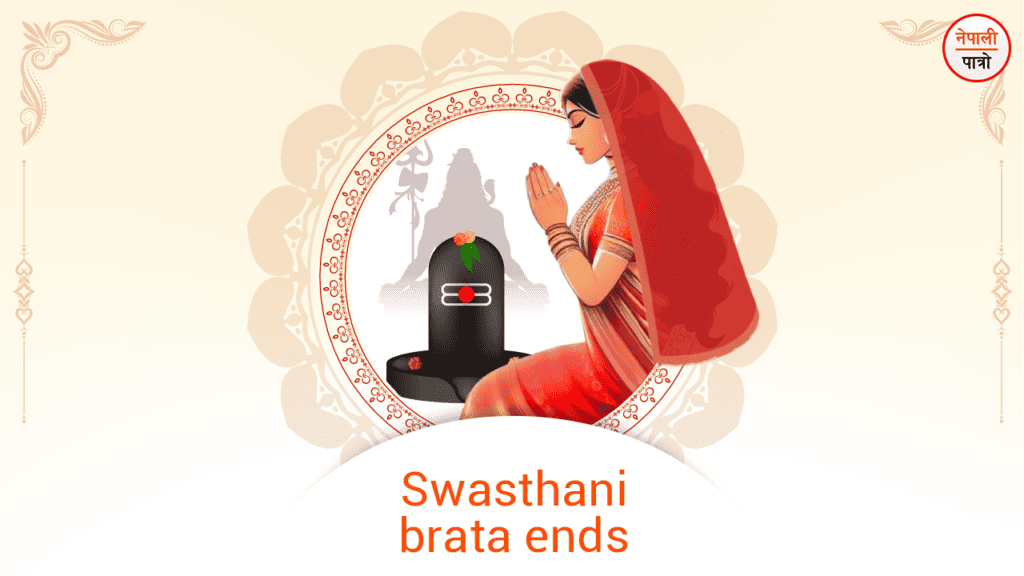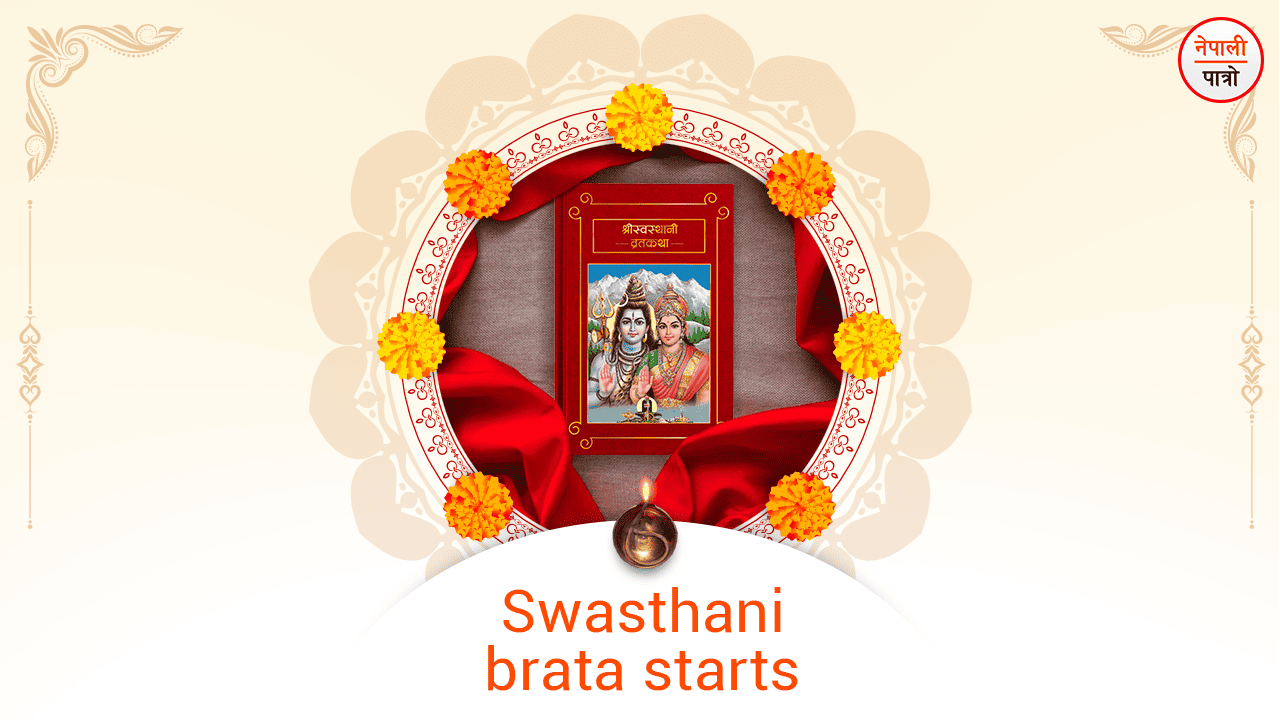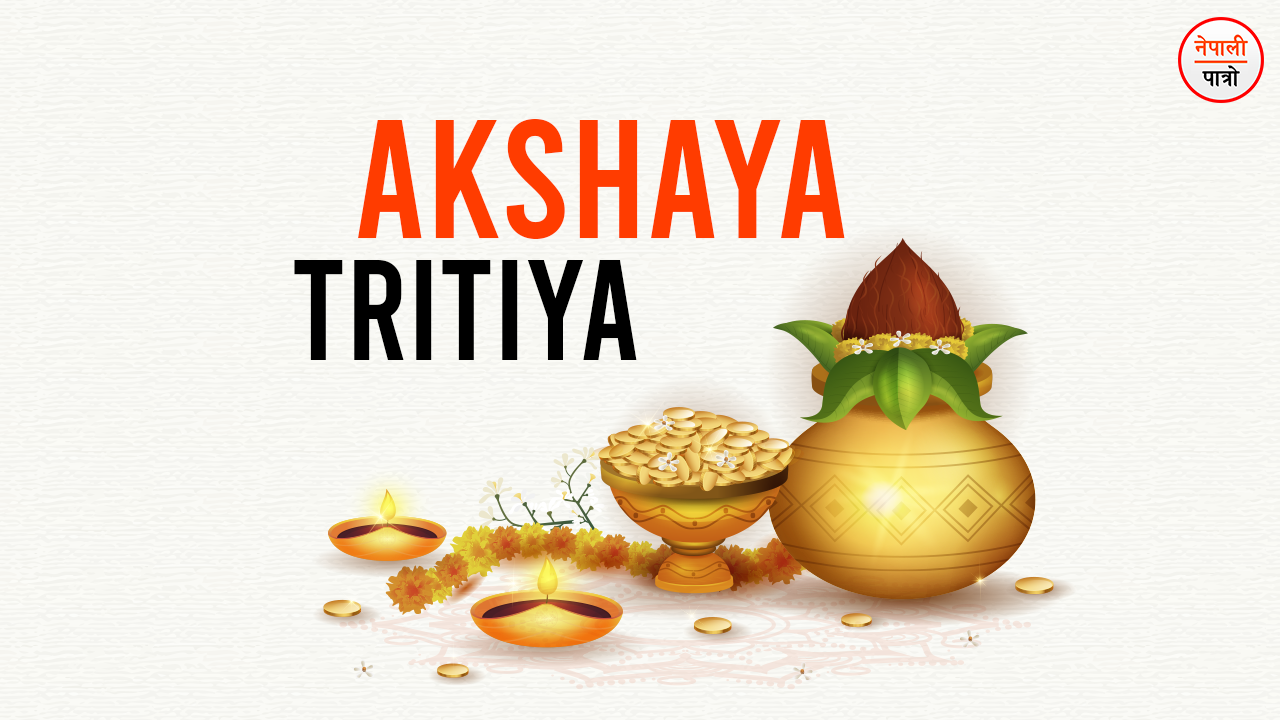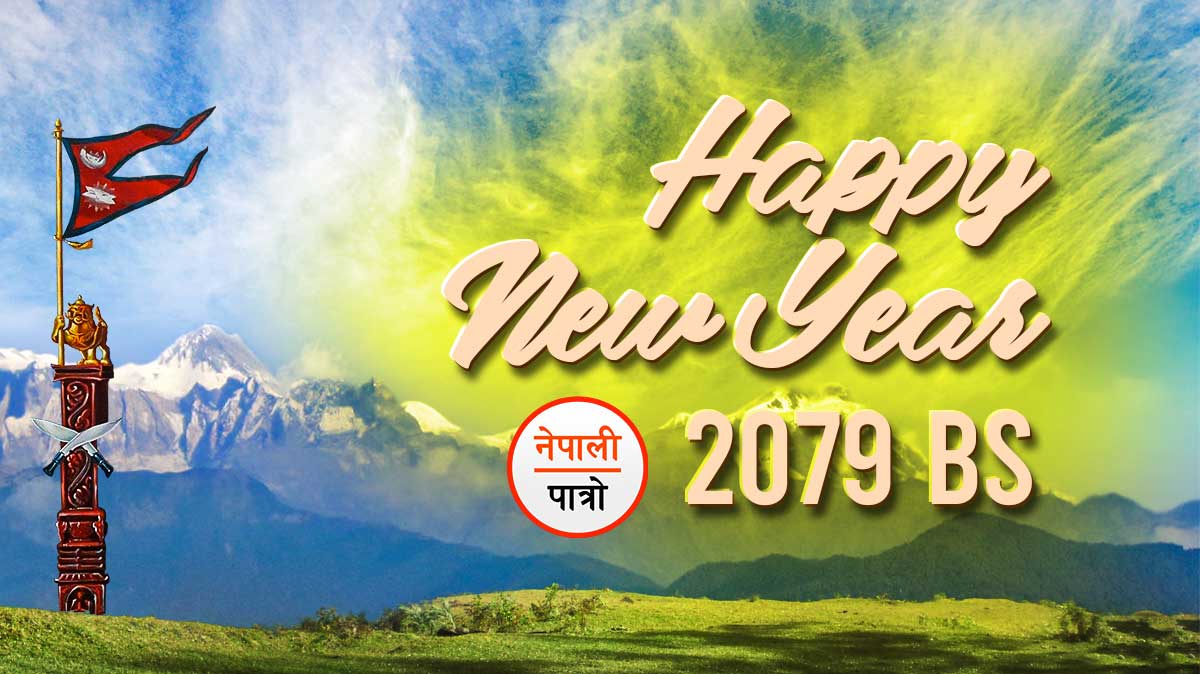
Shree Swasthani Brata Ends
Shree Swasthani Fast Concluding– Shree Swasthani fast is one of the difficult fasts for women observed during Poush Shukla Purnima for one month. The deities of this fast are Lord Shiva and Jagajjanani Parbati.
According to the evidence of mythological texts, Nepal is the playground of the Himalayan daughter Parbati/Parvati. Mother Parvati, the powerful form of Lord Shiva, had aspired to receive Lord Shiva as her bridegroom from her early childhood days. And, this same difficult fast that Bhagwati observed for the first time in history to get her desire fulfilled is the Shree Swasthani fast.
The History and Life plus Devotion of Sati Devi
Curiosity surely arises, who is the Bhagwati Shree Swasthani Mata/mother worshiped by Parvati herself? Come, Let’s talk about this:
Goddess / Mother Parvati was Sati Devi, the daughter of Daksha Prajapati in her previous life. As mentioned in the Shree Swasthani Brat-Katha, Lord Shivaji was married to the same Sati Devi. At one point, Daksha Prajapati organized a big Yagya (fire worship).
Lord Brahma, Bishnu, Indra, and Tettis Koti (3.3 million) gods/deities were invited along with their courtesans but Daksha Prajapati did not invite his own son-in-law Shiva and daughter Sati Devi. Sati Devi was dissatisfied as the perfect Yagya idol, Lord Shiva was not invited to the Yagya.
Therefore, she went to the Yagya site to complain about it with her father. Instead, he insulted, disrespected, rejected, and condemned Lord Shiva which deeply had an effect on Sati Devi and she felt even more unbearable pain. Sati Devi was not only Shiva’s consort but also a form of power.
Sati and Shiva are forms of nature representing Nature (Prakriti) and man (Purush) respectively. Therefore, Sati vowed to end her relationship with her own father, who committed a great sin like slandering Lord Shiva. And, sacrificing her life to Lord Shiva, she jumped into the fire altar of Yagya and gave up her life.
Daksha’s fire sacrifice was destroyed by shiva’s army because of Daksha condemning Lord Shiva. Birbhadra beheaded Daksha and threw the head in the fire altar. After that, respecting the compassionate call of Daksha’s wife Birani, the same Bir Bhadra gave life to Daksha Prajapati but in the form of an animal.
Lord Shiva is the Lord of all sacrifices/Yagya. When the same Yagya idol was not invited nor was the Yagya part given, the Yagya performed by Daksha Prajapati would have been in vain and disastrous automatically. What happened to Daksha Prajapati after Sati’s tears and curses are all described in the story.
Lord Shiva’s Lamentation and Shakti Peeths
The demise of his better half and life partner Sati as his integral power caused asceticism in Lord Shiva and he began to travel the earth carrying the body of Sati Devi. Because of this, Sati Devi’s body started melting and her body parts started falling apart from her body. Shiva and Shakti resided in the holy places where Bhagwati Sati Devi’s body parts had fallen. Jyotirlingas and Shakti Peeths (power center) were established in different parts of the world as part of Shiva.
There are various contexts of stories of local devotees receiving gifts from Shiva Shakti while performing devotional service, worship, and penance at these Shakti Peeths. These contexts have shown the importance of Shakti Peeths.
Parbati’s Life and her Devotion
Sati Devi was reborn from the womb of Himalaya’s wife Menaka with the name of Parvati/Parbati. Parbati had already chosen Lord Shiva as her husband in her heart according to her previous life’s ancestral rites. But, when Parvati was old enough to be married, her father Himalaya started preparation for her marriage with Lord Bishnu. When Parbati found out about this, she ran away to the remote forest, and started meditating on Mahadev (Lord Shiva), and began to do severe penance.
When Parbati decided to become Shiva’s wife and did penance to him, Ashutosh Mahadev (Ashutosh meaning he who is easily pleased) was pleased with her and appeared before Parbati. And, after taking suggestions, advice from Lord Bishnu, who advised her ways to get Shiva as her husband.
Bishnu advised Parbati to fast for a month on Shree Swasthani so as to get her wish fulfilled of getting Shiva as her husband and for the first time in history Parbati methodically fasted on Shree Swasthani for a month.
Attributes of Shree Swasthani
Shree Swasthani Bhagwati is of a golden divine color like gold, has three eyes, has a happy face like a lotus flower, sits on a throne adorned with various ornaments, holds a sword, and sapphire lotus has four arms and is the power source of Shiva. Under the influence of such a Shree Swasthani goddess’s fast, Parbati received the gift of obtaining the power form of Shiva in her body and also got Mahadev as her husband.
It is already mentioned here that, in the Satya Yuga, according to the advice of Lord Bishnu, Parvati, the daughter of the Himalayas, fasted in Shree Swasthani to get Mahadev / Lord Shiva as her husband.
Goddess Parvati’s Suggestion and its effects
In time, Goddess Parbati suggested observing this fast to the poor and destitute as well. Mother Parbati sent a message through Sapta Rishi (seven sages) to Goma Brahmani, who lost her husband while she was pregnant with a 70-year-old Shiva Sharma Brahmin at the age of seven. The context of her being saved from the effect of the story of Shree Swasthani too is mentioned in this Shree Swasthani fast. Under the influence of this story, her son Navaraj, who was abroad and lost, immediately returned and became the king of the beautiful country, Labanya.
In the same way, even only the offerings of Shree Swasthani Brat that came floating in the river were found by a Serpent separated from her partner. She blessed the one who put the offering in the water and just by this small holy deed she was reunited with her partner.
Chandravati, the daughter-in-law of the same Goma Brahmani, suffered for years being unconscious in the bank of Shali Nadi, River when she arrogantly blasphemed and despised the Shree-Swasthani Goddess. Whereas, the devout people who used to carry her in a palanquin on their shoulders received the heavens. Later, Chandravati was rescued due to the effect of Shree-Swasthani’s fast. All these issues and contexts come up in the Swasthani story.
Places Mentioned in the Story / Katha
The Sali Nadi river and the Sleshmantak forest mentioned in the story of Shree Swasthani Mata are in Kathmandu, inside our country Nepal. It is mentioned in the Skanda Puran that all the themes and events mentioned in this story also happened in the spheres of Nepal. “Swasthani” is the goddess of one’s own place. Nepal also is the playground of Parbati, the daughter of the Himalayas.
Goddess Parvati, who became an integral part of Shiva by performing penance in this land, is known as Shree Swasthani Parmeshwari. Devotees flock to Pashupatinath, Shleshamantak forest, Bankali, Bagmati river, Mrigasthali, Kirateshwar, Gaurighat, Guhyeshwari, and various other Shakti Peeths and Mahadev temples, sacred Shali Nadi river, etc. where Shiva-Parvati played in various forms during the entire month of the fasting. In those places, Swasthani Mela (fair) is also held during the fasting period.
Methods of Fasting and its Observance
In order to observe/take the fast of Swasthani, on the day of Poush Shukla Chaturdashi, one should cut the nails of the hands and feet, take a bath, put on clean clothes, and prepare for the fast by cleaning the house and its yard, etc. Brati (the person observing the fast) should consume fruits only once a day and sleep on the floor over a Radi-Pakhi, i.e, hand-knit rough woolen carpet/quilt throughout the month.
On the day of Poush Shukla Purnima, after bathing in the morning and doing daily activities, by purifying oneself, one should sit in a pure cushion made of Cuz grass. Then the Brati, to start the fasting, should make a resolution from the heart as follows “From today till the full moon of Magh Shukla Purnima, as per the method of Fasting, I will spend every noon with the ritual/ offering of Shree-Swasthani Parmeshwari, and every day at night by listening to the Swasthani story, I will conclude my fast of one month” and the Brati should start the fasting.
There is a provision for the devotee or brati of Shree Swasthani to bathe daily during the month of Magh, to remember the goddess with devotion in their minds, to worship and adore as per mentioned methods, to chant/recite mantras, and to eat only one meal of sattvic food, and in the evening to recite, listen to stories of Aradhya Devadhideva Mahadev and Mata Parvati. In this way, after fasting for a whole month, one should conclude the fast on the full moon of Magh Shukla Purnima.
In the Swasthani Brat Katha, Parvati during her childhood used to worship Lord Shiva by making a sand Shivalinga, thus there is a tradition of making sand shiva linga and worship it during this Shree Swasthani fast. Worships should be done by placing a copper plate inscribed with Asta Dal above a Tapari (multipurpose leaf plates and bowls made by stitching Saal leaf of Saal trees, “Shorea Robusta” with small very thin-small bamboo sticks) filled with rice placing it near the Shivalinga. Shree Swasthani Fast Concluding
The ornaments of Shree Swasthani Mata should be placed on that plate and a beautiful idol with ornaments should be set up and worshiped along with Bhagwati’s prasad (offering of sweets, fruits, etc) and Mahadev by offering Panchamrit, sandalwood, incense, lamps, clothes, betel nut, vermilion, saubhagya dravya (various items used by Hindu married women, red in color), Sel-roti, (Deep fried round bread), haluwa (rice or wheat flour fried and prepared like a pudding), etc.
After the puja, one should meditate on the following mantra of Shree Swasthani Mata with flowers in hand:
सुवर्ण–वर्ण–दीप्ताभां त्रिनेत्रां कमलाननाम् ।
सिंहासन–समासीनां सर्वालंकार–भूषिताम् ।।
नीलोत्पल–धरां वामे, दक्षिणे वरदां शुभाम् ।
खड्ग–चर्मधरां चोर्ध्वं वामदक्षिणयोः क्रमात् ।।
चतुर्भुजां च मां वाऽपि पूजयेत् वृषकेतुनम् ।
एवं ध्यात्वा महादेवीं स्वस्थानीं जगदीश्वरीम् ।।
That is to say, “I pay attention and meditate to Shree Swasthani goddess who has a divine color like gold, has three eyes, with a happy face like a lotus flower, sits on a throne adorned with various ornaments, holds a sword, feather and sapphire lotus, having four arms”.
At noon one should worship Shree Swasthani Mata along with Lord Shree Mahadev. After the puja (worship), one should give argha (obeisance) to the goddess Shree Swasthani so that one’s wish may be fulfilled. After the evening worship, the story of Shree Swasthani Mata should be recited.
There is a tradition of listening to the story of Swasthani Brat, a dialogue between Kumar and Agastya Muni of Magh Mahatmya under the Kedar section of Skanda Puran. Aarti should be performed after listening to the story.
After performing daily pujas in this order, the story called daily during the days of Magh is ended by writing “Aum-kar” on a copper plate for a special puja. One should put a sand Shiva-linga in the center of the plate and also install the Shree Swasthani goddesses figure and make the offering with 108 pieces of Pan (kind of sweet wrapped in betel leaves containing areca nut, lime, cinnamon, etc), 108 pcs of Janai (sacred thread worn by Brahmins as well as some other following Hinduism) 108 Akchyata (Rice), 108 Oil lamps, 108 offerings, barley, sesame, etc., all items to be offered must contain 108 pieces. Other fruits and offerings can be offered as much as possible. After the puja, one should circumambulate or perform the prostration of the plate and offerings 108 times. Shree Swasthani Fast Concluding
Shree Swasthani Fast Concluding
After concluding (Shree Swasthani Fast Concluding) the fasting, by reciting “O Swasthani Mata, by the grace of Yours, I have completed my fast” and give Argha (obeisance). After this all the offering made to the Shree Swasthani mata, from 108 pieces of various items, one should take out 8 pieces of each item and give it as Prasad to one’s husband if there is no husband to one’s own son, if there are no sons then to son of one’s best friend or if none of them exists then they should be placed in the flowing river water with the wish that all incomplete works, etc be fulfilled. It is also mentioned in the method of fasting of Shree Swastani Mata that after this the remaining fruits and other items should be eaten during the concluding night and stay awake the whole night. Shree Swasthani Fast Concluding
Popular Belief and the End.
There is a popular belief that after doing so many deeds (Karma), and by consuming the items from the offerings made to Shree- Swasthani Mata by the brati and family, the result of Shree Swasthani Brat-Katha will eliminate all the sorrows and fulfill all desires plus wishes of the devotee and her family.
Since the marriage of Shiva and Parvati took place due to the influence of the Shree-Swasthani Brat, it is believed that by observing this fast, one can get a bridegroom as the one wish for. It is believed that the effect of this fast will help to attain happiness, peace, prosperity, and auspiciousness as received by Goma the Brahmani.
One of the fasts performed by women in Nepal with great reverence and faith is the fast of Shree-Swasthani Mata. Shree Swasthani Fast Concluding



February 7, 2023 1 year
mesan